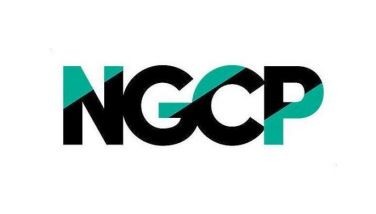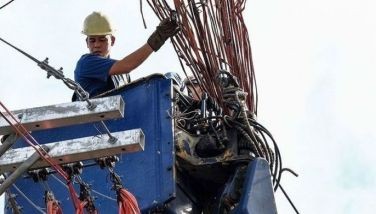WB to help fund $89.5-M water sewerage rehab project
December 19, 2006 | 12:00am
The World Bank has agreed to partly finance the $89.46 million water sewerage rehabilitation program of the Philippines.
In a project information document released yesterday, the World Bank said the sewerage project will be financed from the Global Environment Facility (GEF) trust fund managed by the bank and forms part of the medium term sustainability project in which the bank recently extended a loan.
According to the international funding agency, the country is losing an estimated P67 billion annually because of water pollution. The figure includes losses in health, fisheries production and tourism. Unfortunately, water quality throughout the Philippines continues to deteriorate due to high population growth, rapid urbanization and industrialization.
Metro Manila, considered as an important economic zone, has three major bodies of water: the Manila Bay, Marikina River and the Pasig River, all heavily polluted.
"Manila Bay is a pollution hotspot in the southern East Asia region," the World Bank said. At the same time, both the Marikina and Pasig Rivers are considered biologically dead.
Up to 75 percent of pollution is caused by residential sewage, with the rest originating from industries. Water is supplied to 90 percent of the population of Metro Manila, but less than 15 percent of residents are connected to a sewerage system, and only about half of the effluent collected is adequately treated.
Thus, in order to ensure water quality, the government has implemented a strategy that scales up investments in sewerage and sanitation.
Aside from the World Bank, another international lending agency, Asian Development Bank (ADB), has helped finance the clean-up of the Pasig River in order to make it a conducive channel of transportation.
In a statement, the ADB said it has released $176 million in financial assistance to help restore the environment and realize the river’s socioeconomic development potential.
The investment components include measures to relocate informal settlers, establish and develop 10-meter wide environmental protection areas along the riverbank, upgrade infrastructure and eliminate illegal dumping of municipal solid waste into the river system.
The Pasig River is poised to become a major commuter route as the Pasig River Ferry Service Project will start plying the routes from Manila to Marikina in June next year.
The ferry will have 14 stations: Plaza Mexico, Escolta, Quezon Bridge, PUP, Sta. Ana, Lambingan Bridge, Valenzuela, Hulo, Guadalupe, San Joaquin, Napindan, Marcos Bridge, Riverbanks and Sta. Elena.
In a project information document released yesterday, the World Bank said the sewerage project will be financed from the Global Environment Facility (GEF) trust fund managed by the bank and forms part of the medium term sustainability project in which the bank recently extended a loan.
According to the international funding agency, the country is losing an estimated P67 billion annually because of water pollution. The figure includes losses in health, fisheries production and tourism. Unfortunately, water quality throughout the Philippines continues to deteriorate due to high population growth, rapid urbanization and industrialization.
Metro Manila, considered as an important economic zone, has three major bodies of water: the Manila Bay, Marikina River and the Pasig River, all heavily polluted.
"Manila Bay is a pollution hotspot in the southern East Asia region," the World Bank said. At the same time, both the Marikina and Pasig Rivers are considered biologically dead.
Up to 75 percent of pollution is caused by residential sewage, with the rest originating from industries. Water is supplied to 90 percent of the population of Metro Manila, but less than 15 percent of residents are connected to a sewerage system, and only about half of the effluent collected is adequately treated.
Thus, in order to ensure water quality, the government has implemented a strategy that scales up investments in sewerage and sanitation.
Aside from the World Bank, another international lending agency, Asian Development Bank (ADB), has helped finance the clean-up of the Pasig River in order to make it a conducive channel of transportation.
In a statement, the ADB said it has released $176 million in financial assistance to help restore the environment and realize the river’s socioeconomic development potential.
The investment components include measures to relocate informal settlers, establish and develop 10-meter wide environmental protection areas along the riverbank, upgrade infrastructure and eliminate illegal dumping of municipal solid waste into the river system.
The Pasig River is poised to become a major commuter route as the Pasig River Ferry Service Project will start plying the routes from Manila to Marikina in June next year.
The ferry will have 14 stations: Plaza Mexico, Escolta, Quezon Bridge, PUP, Sta. Ana, Lambingan Bridge, Valenzuela, Hulo, Guadalupe, San Joaquin, Napindan, Marcos Bridge, Riverbanks and Sta. Elena.
BrandSpace Articles
<
>
- Latest
- Trending
Trending
Latest
Trending
Latest
Recommended






























